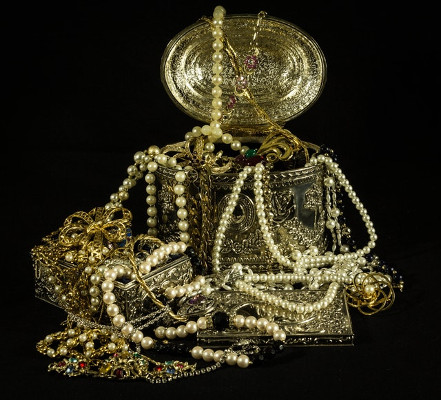
If you've ever visited a jewelry shop, you've probably noticed that the jeweler keeps a scale handy. Jewelers rely on scales and balances to assess the quality of certain materials and to count gems. The type of weighing device needed for jewelry weighing depends on the specific requirements for each application. This post will take a look at the many features of jewelry scales and balances, helping you to choose the best jewelry scale for your needs.
Jewelry Scales: Common Features and Functionality
It's important to make sure your scale or balance contains the weighing units necessary to weigh jewelry. Grams are the most important, but weighing units such as carats, pennyweights, mommes, avoirdupoids, troy ounces, and grains can prove helpful. For more information on weighing units and how they're used, go here.
If you plan to buy or sell by weight, the law requires that your jewelry scale must be approved for trade. This includes not only jewelry, precious metals or gems you wish to sell, but also purchasing scrap jewelry from customers.

Weighing devices used for counting applications don't have to be trade approved, but they're helpful for counting beads and other small parts when creating custom jewelry.
Make sure you think about your capacity and readability requirements before choosing a balance. You might need a device with higher readability to weigh very small gems. If you'll be weighing raw materials, a balance with higher capacity and lower readability can meet your needs.
Density determination for jewelers
Below-balance weighing and density kits help users identify the type and appraise the value of materials based on density. Jewelers working with precious gems or metals can perform density tests to identify different gems and also to determine quality, helping them price their products accordingly. Density tests can help verify the authenticity of gems and metals. Density determination works if the object doesn't have gems or attachments, as added materials can interfere with the results.

Types of balance used for weighing and analysing jewelry
Precision balances are ideal for bulk-weighing raw materials that will be refined and cut into jewelry pieces. An analytical balance is useful for assessing the density of gems. Many density tests are done in water, but density determination for gems is performed in heavy liquids. An analytical balance is useful for this, as it lets you specify the density of whichever liquid you're using.

As we noted earlier, instruments used to measure products sold by weight must be approved. Recently, Adam Equipment's HCB portable compact balance was approved for trade use by NTEP. Jewelry and pawn shops rely on these balances because they offer the high precision needed for precious materials, with the ease of use and portability provided by top-loading balances. They also feature internal calibration, which isn't required but does save time.
Compact balances can be handy when traveling or checking raw materials, as they're portable and easy to use. Some are equipped with a draft shield, which helps eliminate breezes that might cause lightweight samples to move around on the weighing pan.
We've provided you with some details about scales and balances used for measuring jewelry. We hope you can use the information to make an informed decision about choosing a weighing instrument for your jewelry weighing needs. Feel free to contact us if you have any questions, and follow us on social media for Adam news and more blog posts. Thanks for reading!

